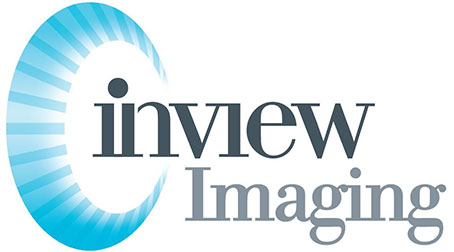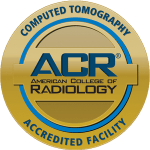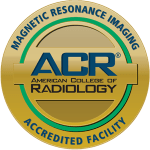
- Reduced Mortality
- Early Detection of Breast Cancer
- Improved Treatment Options and Outcomes
- Mammography Misconceptions and Myths
- Overdiagnosis and Informed Decision-Making
- Managing False-positives and Anxiety
- Importance of Regular Screening Interval
- Preparing for Your Mammogram: What to Expect
- Talk to Your Doctor About Your Breast Cancer Risk by Age 25
- “Return to Care” Toolkit: Encouraging Regular Mammograms
- Summary
- Frequently Asked Questions
Mammography imaging plays a crucial role in early detection and treatment of breast cancer. This listicle is designed to shed light on why mammography imaging is important, covering its significance in catching abnormalities at an early stage, the peace of mind it offers through regular screenings, and the potential life-saving impact it can have.
In addition to exploring the benefits of mammography imaging, we’ll delve into how this diagnostic tool empowers women by providing them with essential information about their breast health. Furthermore, we’ll discuss the advancements in technology that have enhanced the accuracy and efficiency of mammography procedures. Stay tuned as we uncover why prioritizing mammography imaging can make a significant difference in your overall well-being and health images.
Reduced Mortality
Mammograms, conventional mammography, patient, play a crucial role in reducing breast cancer mortality, primarily through early detection. Randomized studies have consistently shown that regular mammography screenings significantly contribute to better survival rates and mortality reduction among women. According to Duffy et al., conventional mammography screenings are linked to a decrease in breast cancer mortality, highlighting their substantial impact on saving lives.
In fact, women who undergo regular mammograms have a lower likelihood of dying from breast cancer compared to those who do not participate in such screenings. This emphasizes the advantage and potential life-saving effects of routine mammography imaging for mortality reduction and opportunistic screening. These findings underscore the importance of individual risk factors and the need for population-wide discussions about the benefits of early detection through health images like mammograms.
The data from these studies also suggest that by increasing the chances of detecting breast cancer at an earlier stage, mammography offers a significant benefit to women’s health. The evidence further supports the notion that widespread implementation of regular screening programs, including conventional mammography, can lead to a considerable reduction in breast cancer-related mortality across the United States and beyond.
Early Detection of Breast Cancer
Mammograms play a crucial role in the opportunistic screening and early detection of breast cancer. They have the capability to identify small tumors that may not be palpable during physical examinations. This means that by using mammography, healthcare providers can detect breast cancer at an earlier stage than if they were relying solely on physical exams.
Early detection through mammography significantly broadens the range of treatment options available to women diagnosed with breast cancer, reducing mortality. When detected early, there is a higher likelihood that less aggressive and invasive treatments can be used, leading to better outcomes for patients.
Furthermore, detecting breast cancer early through mammograms substantially improves the chances of successful treatment and mortality reduction. Research has shown that early detection greatly enhances survival rates and overall prognosis for women with breast cancer, leading to mortality reduction.
It’s important to note that radiation exposure from mammograms is minimal and considered safe for most healthy women. The benefits of detecting potential issues far outweigh any potential risks associated with radiation exposure from this imaging procedure.
Ultimately, prioritizing regular mammograms as part of routine healthcare can make a significant difference in identifying and treating breast cancer at its earliest stages.
Improved Treatment Options and Outcomes
Early detection through mammography imaging offers significant advantages in the treatment of breast cancer effects. It allows for less aggressive treatment options, leading to better patient outcomes. For instance, when breast cancer is detected at an early stage through mammograms, patients often have a wider range of treatment choices available to them. This can include minimally invasive procedures or targeted therapies that are associated with fewer side effects and improved quality of life.
Mammography plays a crucial role in identifying the stage of breast cancer, which is essential for determining the most suitable course of treatment for each patient. By providing detailed information about the size and location of tumors, as well as whether they have spread to nearby lymph nodes or other parts of the body, mammograms guide healthcare providers in developing personalized and effective treatment plans tailored to each patient’s specific condition.
Timely detection facilitated by regular mammograms leads to more effective and successful treatment outcomes over the long term follow-up period. Research indicates that women who undergo routine screening mammography are more likely to receive less invasive treatments compared to those whose cancers are detected at a later stage.
Mammography Misconceptions and Myths
Addressing common myths about mammography can encourage more women to undergo screenings. One prevalent myth is that conventional mammography is extremely painful. However, the discomfort experienced during a mammogram is often brief and minimal, lasting only for a few seconds while the image is taken. By dispelling this misconception, women may feel more at ease with the procedure.
Dispelling misconceptions about discomfort during mammograms can alleviate fears and promote screening. It’s crucial for women to understand that the potential discomfort from a mammogram pales in comparison to the life-saving benefits of early detection. In fact, studies have shown that regular screening using imaging techniques like conventional mammography significantly reduces mortality rates from breast cancer by detecting tumors at an earlier, more treatable stage.
Understanding the benefits of mammography can help debunk myths and increase screening rates. When individuals are aware of how early detection through imaging leads to less invasive treatment options and higher survival rates, they are more likely to prioritize their health by scheduling regular screenings.
Overdiagnosis and Informed Decision-Making
In addressing overdiagnosis concerns, it is crucial for women to engage in informed discussions with their healthcare providers. By actively seeking information from reliable sources and openly communicating with their doctors, women can gain a comprehensive understanding of the benefits and potential harms associated with mammography. This empowers them to make informed decisions that align with their individual health needs.
Informed decision-making involves recognizing the balance between the advantages of early detection through mammography and the possibility of overdiagnosis. Research has shown that educating women about overdiagnosis significantly influences their perceptions and choices regarding breast cancer screening. When armed with accurate information, individuals are better equipped to navigate the complexities surrounding mammography, leading to more confident decision-making processes.
By fostering an environment where open dialogue between patients and healthcare professionals is encouraged, women are empowered to make well-informed choices regarding mammography. This collaborative approach ensures that individuals have access to all pertinent information necessary for making decisions aligned with their personal values and preferences.
Ultimately, by promoting informed decision-making through education and communication, women can confidently navigate the complexities of breast cancer screening while minimizing the risks associated with overdiagnosis.
Managing False-positives and Anxiety
False-positive mammogram results can indeed trigger anxiety in patients, but it’s essential to understand that follow-up tests are crucial for providing clarity. In fact, according to the American Cancer Society, only about 10% of women who undergo additional examinations after a false positive on a mammogram turn out to have cancer.
Strategies for managing anxiety related to false-positive results play a significant role in improving overall well-being. Healthcare providers often recommend mindfulness techniques, such as deep breathing exercises or meditation, to help patients cope with the uncertainty and stress caused by false positives. Seeking support from friends and family can also alleviate anxiety during this period.
Healthcare providers themselves play a crucial role in supporting patients through false-positive mammogram results. Providing clear information about the next steps and potential outcomes is vital for reducing patient distress. Moreover, offering emotional support and empathy can greatly ease the anxiety experienced by individuals dealing with these findings.
Importance of Regular Screening Interval
Regular screening intervals play a crucial role in the effectiveness of mammography imaging for breast health.
- Timely Detection: Adhering to regular screening intervals ensures timely detection of any changes in breast tissue, allowing for prompt medical intervention if necessary.
- Maximized Effectiveness: Following recommended screening intervals maximizes the effectiveness of mammography in detecting abnormalities. Research shows that consistent adherence to screening guidelines significantly improves the chances of early detection and successful treatment.
- Baseline for Comparison: Consistent screening intervals provide a baseline for comparison, enabling healthcare providers to monitor changes over time and make informed decisions about further diagnostic procedures or treatments.
Preparing for Your Mammogram: What to Expect
Knowing what to expect during a mammogram appointment can significantly alleviate anxiety and uncertainty. By understanding the procedure and preparation steps, women can feel more at ease and confident during their mammogram. Clear communication with healthcare providers about expectations for the mammogram experience is essential for ensuring a positive and comfortable experience.
During the appointment, it’s important to remember that discomfort is normal but should not be excessively painful. Being mentally prepared for this can help manage any temporary discomfort experienced during the procedure. Being aware of any specific instructions from the healthcare provider regarding clothing or deodorant use beforehand can ensure a smooth process on the day of the mammogram.
Understanding that each woman’s experience may differ due to factors such as breast density or prior health history is also crucial in managing expectations. Healthcare providers play an integral role in providing personalized guidance based on individual circumstances.
Moreover, being informed about potential follow-up procedures or next steps after a mammogram can provide reassurance and clarity post-appointment. This knowledge empowers women to actively participate in their breast health journey by seeking further information if needed.
Talk to Your Doctor About Your Breast Cancer Risk and health images by Age 25
Initiating discussions about breast cancer risk with a healthcare provider at a younger age is crucial for proactive health management. Research shows that early conversations lead to increased awareness and understanding of individual risk factors, empowering young women to take charge of their health.
Engaging in open dialogue with healthcare professionals facilitates the development of personalized screening plans tailored to an individual’s specific risk profile. This approach enables targeted and timely interventions, potentially improving outcomes through early detection and treatment.
Informed decision-making regarding breast cancer risk assessment is essential for young women. By discussing these matters early on, individuals can gain insights into the available screening options, including mammography imaging and other modalities suitable for their age group.
By addressing breast cancer risk at a younger age, individuals can better understand how gender, family history, lifestyle choices, and environmental factors contribute to their overall risk profile. This knowledge empowers them to make informed decisions about their health while advocating for necessary screenings or preventive measures based on evidence-based recommendations.
Early engagement with healthcare providers also helps alleviate concerns related to radiation risks associated with mammography imaging. It provides an opportunity for young women to comprehend the benefits versus potential risks associated with various screening methods, promoting confidence in making well-informed choices regarding their breast health.
“Return to Care” Toolkit: Encouraging Regular Mammograms
Providing resources and support through the “Return to Care” toolkit can significantly boost participation in mammography screenings. Patients are more likely to engage in regular screenings when they have access to comprehensive guidance and assistance.
The “Return to Care” toolkit plays a crucial role in addressing barriers that may hinder individuals from getting regular mammograms. By offering practical strategies for overcoming these obstacles, the toolkit empowers women to prioritize consistent screening behavior, thereby enhancing their overall breast health.
Implementing the strategies outlined in the “Return to Care” toolkit reinforces the importance of regular mammography. This reinforcement is vital as it helps individuals understand that consistent screenings are not only beneficial but also essential for early detection and treatment of breast abnormalities.
For instance, providing information about local screening facilities, educating patients on insurance coverage options for mammograms, or offering transportation assistance can all be part of this toolkit’s approach. These types of support mechanisms help remove logistical barriers that could prevent individuals from attending their scheduled mammography appointments.
Summary
Regular mammography screenings play a crucial role in reducing mortality rates by enabling the early detection of breast cancer, which in turn leads to improved treatment options and outcomes. Despite prevalent misconceptions and myths, understanding the significance of mammograms empowers informed decision-making, helping individuals manage false-positives and anxiety associated with the process. Embracing the “Return to Care” toolkit and discussing breast cancer risk with your doctor can further emphasize the importance of regular screenings.
Don’t wait until it’s too late. Schedule your mammogram today and encourage your loved ones to do the same. Early detection saves lives. It’s time to take charge of your health and well-being.
Frequently Asked Questions
Why is early detection of breast cancer important?
Early detection increases the chances of successful treatment and reduces mortality rates. It allows for less invasive treatment options, resulting in better outcomes.
What are some common misconceptions about mammography?
One common misconception is that mammograms are extremely painful. In reality, while they can be uncomfortable for some individuals, the procedure is generally quick and well-tolerated.
How can I manage false-positives, anxiety, and radiation risk related to mammography?
It’s essential to stay informed about the possibility of false-positives and discuss any concerns with your healthcare provider. Engaging in stress-reducing activities such as meditation or deep breathing can also help alleviate anxiety.
What should I expect when preparing for a mammogram?
When preparing for a mammogram, it’s helpful to wear comfortable clothing and avoid using deodorants or lotions on the day of the exam. You may also need to bring prior imaging results if you have them.
Why is regular screening at recommended intervals important?
Regular screening at recommended intervals helps ensure that any potential issues are identified early on, increasing the likelihood of successful treatment outcomes. It provides a baseline for comparison in future screenings.


